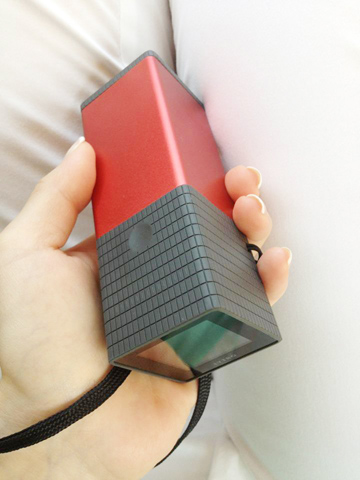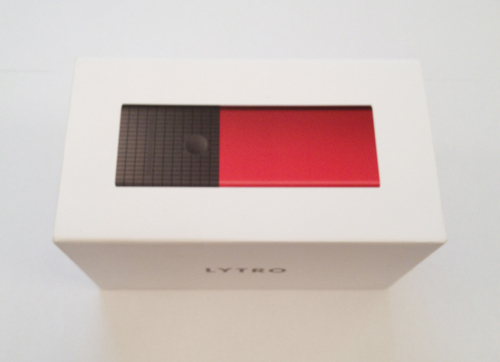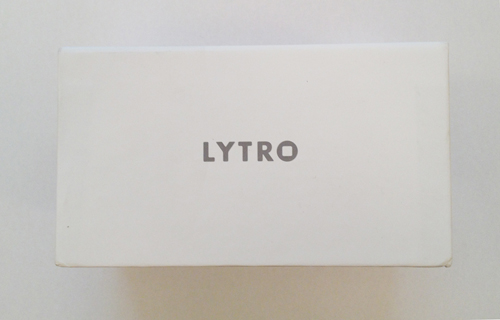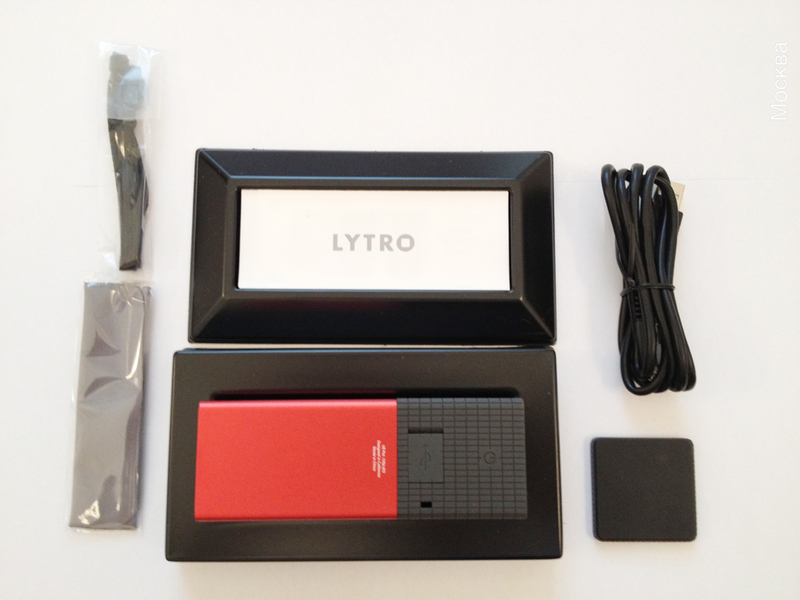Lytro camera to the touch

The long-awaited box has arrived!
')


To the touch a pleasant, high-quality cardboard, bright printing, obvious associations with the Iphone, but more bulky.
Open up. Inside we see the following:
- Camera
- MicroUSB cord (charging from it)
- Magnetic lens cap
- A piece of lens cleaning cloth
- Cord on hand
- A small booklet with a description.

In general, everything looks nice and high quality.


Materials: metal with colored coating and rubberized plastic.
On camera:
- Bottom on / off button
- There is also a microUSB socket
- Above the button captures the image, there is also a sensitive area of the zoom: small teeth right on the plastic, you follow them with your left to right finger zooming in, right to left zoom out
Very high switching speed and shooting.
Screen - touch screen, moving from right to left causes a list of photos, bottom-up movement of the general menu with information on the battery, memory size, etc.
In the hand is comfortable, if the hand is not very small.
Questions causes color deposition on the metal part Lytro - obviously will scratch. Just need to buy a bag.
When connected to Mac, I offered to install the software, then I updated the software, then I updated the camera itself and made a backup.
The software, simple and concise, allows you to post-process a photo, including choosing a focus object, and fumble it either on the lytro website, either in FB or in the mail.
While a couple of examples of a single image with a different focus area.


Examples of live photos with the ability to focus in various places here
See the rest in the comments below.
The purpose of the camera also raises questions. Apparently this is a social hipster gadget: clicked, threw off, processed, fumbled on the network. Moreover, the software immediately has a share button. In this case, it would be nice to have wi-fi right in the camera.
Background on Lightfield technology
For the first time, studies of the light field were conducted at Stanford University more than 15 years ago. For the most promising studies of the light field, a camera the size of a room connected to a supercomputer was required. Today, Lytro completes work on mastering the light field in laboratories and made them available to everyone, in the form of the first camera of the light field - Lytro

Light field
The light field is an area of space filled with light. The light field completely determines how the picture appears. This is the amount of light propagating in any direction through every point in space. Conventional cameras can not capture the light field.

Capture the light field
Recording light fields is an innovative way, using a completely new type of sensor, called the light field sensor. The light field sensor records not only information about the color and intensity of each point in the image, but also vector information about the directivity of the light entering the camera lens.
Light field processing
How can a light field camera use additional information? Using powerful software to process additional data, the Lytro camera provides new features that were previously unavailable.
Unlike a conventional camera that captures only the foreground, the Lytro camera captures a light field in which the light spreads in any direction and interacts at every point in space. Thus, at the post processing, you can choose the focusing point in the frame.

Lytro Features
(from Lytro-russia.ru)

Light field
The light field is an area of space filled with light. The light field completely determines how the picture appears. This is the amount of light propagating in any direction through every point in space. Conventional cameras can not capture the light field.

Capture the light field
Recording light fields is an innovative way, using a completely new type of sensor, called the light field sensor. The light field sensor records not only information about the color and intensity of each point in the image, but also vector information about the directivity of the light entering the camera lens.
Light field processing
How can a light field camera use additional information? Using powerful software to process additional data, the Lytro camera provides new features that were previously unavailable.
Unlike a conventional camera that captures only the foreground, the Lytro camera captures a light field in which the light spreads in any direction and interacts at every point in space. Thus, at the post processing, you can choose the focusing point in the frame.

Lytro Features
- Colors: red, gray, blue
- Memory capacity: 16 GB. (750 photos) or 8 GB. (350 pictures)
- Memory Type: Built-in flash memory.
- Technology: Lytro Light Field Sensor and Lytro Light Field Engine 1.0.
- Optics: 8x optical zoom, constant f / 2.
- Control: power button, shutter, zoom and touchscreen.
- Display: 1.46 ″ LCD display with touchscreen function.
- Exposure: set using the touchscreen.
- Battery: Lithium Ion built-in battery.
- Record File .flp
- Resolution: 11 megarey. The number of light rays captured by the sensor.
- Software: Included in the kit. Mac version. Windows version is being developed.
- Photo Storage: Free photo storage on Lytro.com.
- Body: lightweight anodized aluminum.
- Weight: 214 grams
- Dimensions: 41 mm x 41 mm x 112 mm
- Delivery set: Lytro camera, Lens cover, Optics care tissue, Wrist strap, 1 m. Micro-USB cable, software.
- Accessories: quick charge device.
(from Lytro-russia.ru)
Source: https://habr.com/ru/post/147172/
All Articles